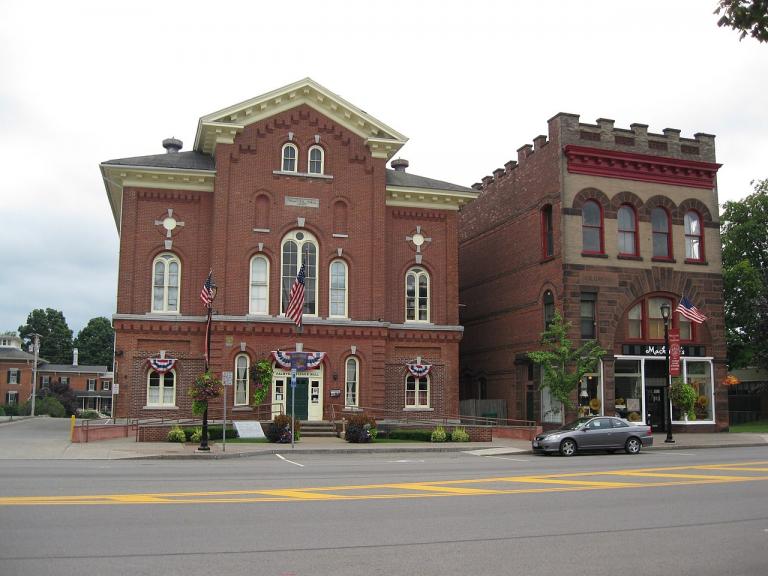If you find errors OR have additional information about this site, please send a message to contact@waynehistorians.org.
Palmyra Village Historic District
| Historic Site #: | 09-003 (Exists) Type: A2 | Town: | Palmyra | ||||
| Site Name: | Palmyra Village Historic District | GPS Coordinates: | 43.063398, -77.232085 | ||||
| Address: | 144 E Main St, Palmyra NY and includes several streets | ||||||
| Description: | |||||||
| |||||||
 |
| Image from Wikipedia |
| Historic narrative: | |||||
The Palmyra Village Historic District was listed on the National Register of Historic Places on October 16, 2009. Originally settled around 1789, Palmyra was first called Swift’s Landing, then, District of Tolland, and in 1796, the name was changed to Palmyra. Palmyra Village was incorporated March 29, 1827. Located along the Erie Canal National Heritage Corridor, the Palmyra Village Historic District includes 207 buildings, two contributing site, seven contributing structures, and one contributing object. The district embraces Palmyra’s commercial, civic, religious, and residential centers. Most of the buildings were constructed between 1830 and 1890. This district includes previously National Registry listed sites: Market Street Historic District, East Main Street Commercial Historic District, and Zion Episcopal Church. The new areas in the Village Historic District include: Palmyra Village Civic Center; the Four Churches at the corner of Main and Canandaigua Streets; Swift Cemetery; Residential East and West Main Street; Palmyra Elementary School area; Residential Cuyler Street; East and West Jackson Street; and the Fairgrounds. Buildings of note include: Village Hall (1866); Griffith Block (c. 1893); First National Bank (1925) Village Green Bandstand (c. 1906); First Methodist Church (1866); Western Presbyterian Church (c 1832); St. Annes Roman Catholic Church (c. 1860s); Alexander McKachnie House (c. 1830); Garlock Office Building, Sherburne Ford Building (c. 1910); Palmyra Elementary School (1924); Carlton Rogers House (1850s); and Floral Hall (1856). | |||||
Wikipedia
